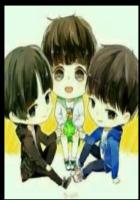"We had another lesson about birds to-day, Norah," said Fred, "and we are beginning to learn how to arrange all birds in classes. As in the case of other animals, the feet have as much to do with it as the head. We have been comparing the feet of birds today.
"Teacher commenced by showing us a picture of a large powerful leg and claw. The claw has three strongly-jointed toes in front and one behind, and each toe is armed with a long, sharp, hooked talon.
"He then showed us the picture of the heads of birds, and asked us which head would best suit such a claw as this.
"Of course we had no trouble in telling him. The claw belonged to one of the birds of prey. These are just the sort of feet we should have expected to find in a bird with such a cruel, fierce-looking head and beak.
"Birds of this class pounce down suddenly with great force upon their prey, burying the sharp, hooked talons deep in the flesh. They then raise themselves with their powerful wings and bear off their victim to their nest to devour it, tearing it to pieces with beak and talons.
"We called them the lions and tigers of the air. They are also called seizers, and now you know the reason for this name.""Look at the canary, Norah," said Willie, who wanted to have a turn now, "he is asleep on his perch. Don"t you sometimes wonder how he can manage to sleep there without falling? It has puzzled me many a time.""Yes," said Norah, "it has puzzled me too. I should like to know all about it.""Well," said Will, "the canary has the same kind of foot as we find in the sparrow, thrush, lark, robin, and the hosts of little birds to be met with in our woods and fields.
"The foot has three long slender, jointed toes in front and a short one behind.
"None of these birds walk well on the ground. They go with little short hops; theydo not walk. Their long toes are made for grasping a twig, and not for walking on a flat surface. They livealmost entirely in the trees, where they are quite at home hopping from twig to twig.
"They sit or perch on the branch, and are called perchers. They even sleep like this, and could not fall from their perch if they wished.""How strange," said Norah. "Go on, Will, please." "Teacher showed us the leg and foot of a fowl. He pointed out a flat white cord that runs up the leg from the foot. When he pulled the cord the toes closed up, and when he let go, the toes stretchedthemselves out again.
"He told us that all birds have this same strong cord up the leg. But in these perching birds the cord passes up the leg and over the front of the knee- joint, to the thick part of the thigh. The very act of sitting must of course bend the knee, and this pulls up the cord, and so draws the toes together without any effort of the bird itself.
"The mere weight of the body resting on the legs does it all. The moment the knee bends, the toes draw themselves up to clasp the branch, and they cannot unclasp it until the bird raises itself from its perching position.""Thank you, Will," said Norah. "That is certainly very wonderful."SUMMARY
The birds of prey have strongly-jointed toes, with sharp hooked talons. They use them for seizing their prey. The perching-birds have long, slender toes, for grasping the twigs. They rest securely on the branch by the mere bending of the knee.
Lesson 16















